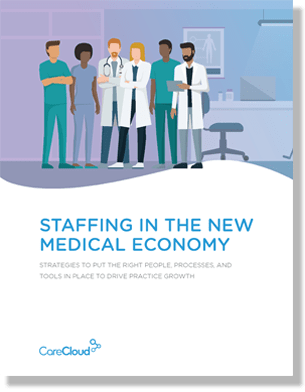McKinsey’s study estimates that $350 billion in revenue will be generated from process automation by 2025.
Research has indicated that half of the healthcare workers experience burnout. This is due to repetitive, labor-intensive tasks and constant shifts between care-oriented tasks and financial data entries.
Hospitals state efficiency and cost reduction as the key areas that worry them for future revenues. Therefore, implementing an automated technology that accurately handles redundant tasks is mandatory for every healthcare practice.
This is where robotic process automation (RPA), artificial intelligence (AI), and machine learning (ML) techniques come into purpose.
Read along to understand robotic process automation (RPA) and how it’s acting as a healthcare rescuer.
What is Robotic Process Automation (RPA)?
Robotic process automation, commonly called RPA, is a process of implying automated bots/chatbots/microbots to work. The prime technologies used in RPA are artificial intelligence (AI) and machine learning (ML).
So, how does a robotic process automation (RPA) tool work?
RPA is the next savior of healthcare workers, as it simplifies regular running tasks using robots. These robots mimic human-like behavior by analyzing a system’s user interfaces and APIs. While it can be applied to any business, autonomous execution in healthcare practice can save a practice’s precious leaking dollars.
Robotic Process Automation in Healthcare Industry?
Technology has profited multiple sectors in the past, but healthcare is yet the most intricate one, as it involves human care, and life is at stake.
The healthcare system today contains overburdened caregivers. Running a practice or hospital has multiple deliverables, such as generating enough revenue, charting for a patient record, patient compliance, and patient experience while abiding by federal regulations. With stressed staff, all these areas are negatively affected.
Deployment of RPA bots may help your Healthcare Practice in many ways:
- Accurate patient scheduling,
- Correct entries of physician orders,
- Reviewing and delivery of lab reports,
- Patient health records,
- Automated processing of data collection within the waiting room,
- Electronic Health Records (EHR) integrations,
- Prescriptions follow-ups,
- Critical clinical judgment support teams,
- Telehealth solutions, and
- Ordering tests and check-ups remotely.
Automating daily tasks and appointing a workforce vendor like CareCloud will help optimize the data in real-time, providing regular red flags checking and financial support. All this translates to a smoothly running practice while generating enough revenues, satisfied patients, and manual labor used wisely.
Effective Patient Scheduling
The most repeated task of high-flow practices is appointment scheduling. Although virtual care systems like telehealth and remote patient monitoring have reduced in-office visits, these still need to be integrated with the practice’s physical systems.??
Cost and Action Transparency
Every healthcare organization is a sole business that needs to generate enough revenue to run its care cycle. This includes re-purposing cost, and audit trials.
A transparent audit requires correct process logs, recorded monthly and annually. Automated bots processing makes this happen efficiently, leaving no reports undone. When all data is secured and reports are finalized regularly, verification is the only human task remaining.
Plus point, with CareCloud, a back office financial expert team will critically analyze these reports, ensuring every penny is put to use.
Efficient Claim Management
Claim management involves assigning Medicare codes to rendered services. If these are not accurately done, the insurance denials will increase. Hence, caregivers end up not being paid. This results in physicians’ dissatisfaction and disagreement with regulatory bodies.
Thus, the healthcare paradigm is disturbed.
If medical services are correctly coded and claimed, healthcare providers will get paid justifiably. They will provide improvised care, knowing they are paid for their delivery.
Data Accuracy
The majority of healthcare facilities’ tasks are coded and repeated regularly. If auto-bots are precisely coded under the supervision of a healthcare expert, chances of error are minimal, but the cost and time saved from this system are enormous.
Improved Utilization of the Human Workforce
Through delivering the robotic tasks to robots, humans can be better utilized for human interactive deliverables like:
- Care provision for a chronic or geriatric patient,
- Clinical training of staff,
- Solving patient concerns over the counter, hence, increasing patient experience.
Reduced Practice Cost
While analyzing the ratio of healthcare revenue generated from process atomization versus the cost paid to healthcare experts, the prior has more weight. Thus, healthcare institutions save significantly when a few experts work alongside robotic workforces.
CareCloud further reduces the cost by providing a back-end care team that reviews your practice’s financial, clinical, and automated tasks —leaving the caregivers to offer direct contact care to patients.
Future of Robotic Process Automation
When simple automated tasks are out of the way, workers can use the freed-up time for a higher-value purpose –?direct patient care.
Implementing RPA workforce in both large and small healthcare facilities is predicted to be the most significant efficiency booster of the future.
CareCloud understands the weight automation holds in a clear, productive healthcare future. Hence, we created an automated workforce to back your practice 24/7.


